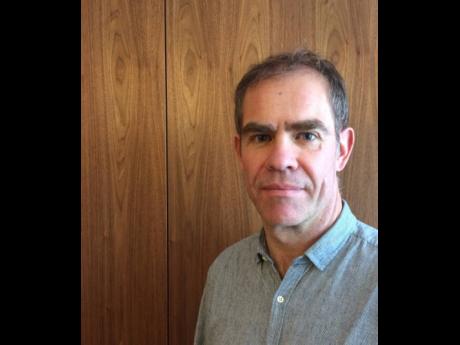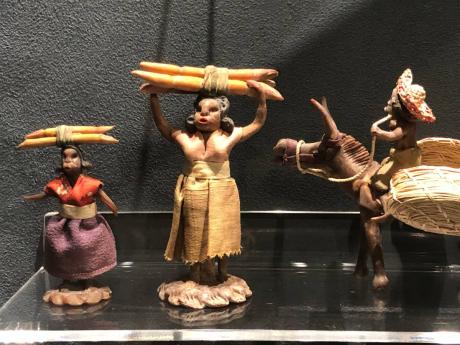Miles Ogborn | Let’s not forget those bawling out for justice
Whether you call it African/African-American/Black History or Reggae Month, this is the month in which many of us recall critical aspects of our slavery and post-slavery history. So make this month count and continue to learn from the bi-monthly column of the Centre for Reparation Research at The University of the West Indies.
This week, Professor Miles Ogborn continues with his third and final instalment on the 1831-32 Emancipation war in Jamaica from the perspective of the revolutionaries. Through the use of trial records, he shows how, on the ground, revolutionaries protested the inequality of chattel enslavement. In this series, Professor Ogborn has brought to life the experiences of William Stennett, Virgil, Charles McLean, and now Jinny. During this Black/African History/African American History/Reggae Month, let us not forget those who suffered for bawling out for justice.
Jinny’s Spark and the Burning of Kirkpatrick Hall Estate, December 1831
It seems clear that the colonial and military authorities in Jamaica in the early 1830s had a fixed idea of what a ‘rebellious slave” looked like and how s/he should be dealt with. Despite the involvement of women in the freedom struggle of the enslaved the vast majority of those prosecuted for their alleged activities during the Emancipation War of 1831-2 were men. Hundreds of these men were executed for their participation in the armed protest. When women were prosecuted, they were generally sentenced to corporal punishment, imprisonment in the workhouse, or transportation (deportation). The only woman to be executed for “rebellion and arson” was Jinny of Kirkpatrick Hall Estate, St James parish (another woman, Eliza Whittingham, of Cow Park, was executed for attempting to poison the militia).
Jinny was tried for rebellion and for burning the trash house and other buildings on Kirkpatrick Hall estate before a court martial in Montego Bay on February 3, 1832, while the war continued in the hills above the town. She pleaded not guilty, but evidence was given against her by two other women enslaved on the estate.
Julian Hall said that she knew the prisoner, that Jinny “put the fire to the Trash house” when she had seen the soldiers coming to the estate. Julian “saw her do it – when the Trash house burn down a Cane piece close to it caught fire – the prisoner was washing her Child’s clothes at the Tank close to the Trash-House – and when [Jinny] saw the White Company coming, she left off washing and took a fire stick & set fire to the Trash house. This the witness saw with her own Eye & the prisoner own it.” In answer to questions from the court, Julian said that Jinny was of “No religion” (that is, she did not identify her as one of the Baptists implicated in the armed protest), had a husband called Hewan or Ewan living in Montego Bay, and that she had no quarrel with the prisoner which might have influenced her evidence. She further testified that no one else was nearby when Jinny set fire to the trash house, although she added that “the one that burnt the other Trash [house] is still in the woods[,] his name [is] Cato.”
STUCK TO HER ACCOUNT
Although Jinny was then able to confront the witness, Julian Hall stuck to her account: “Julian did you see me make the fire? Answer: cannot tell where prisoner got the fire – Did you ever see me with any fire stick? Answer: Yes, she did carry the firestick.”
Venus, alias Rebecca Thomas, another woman enslaved on Kirkpatrick Hall Estate was then called to give evidence. She told much the same story. Jinny “set fire to the Trash House & [it] was burnt down – nobody was with the prisoner – [She] saw the prisoner with her own eye take fire stick and set fire to the Trash house; does not know where she got the fire from – it was the same day the Regiment was going to Leogan [estate] [The] prisoner was washing her Child’s clothes just before.” Answering the court’s questions, Rebecca Thomas said that she had not been with Julian when the fire was set, her evidence was independent of that already given: “she did not know where Julian saw it from, but I saw it from my own House.” In contrast to the other witness, she testified that the prisoner was a member of the Baptist church.
Again, Jinny’s questioning of the witness – another woman she would have known well – just reinforced the case being made against her: “Did you see me set fire to the Trash House? Answer: saw prisoner at the Tank washing the Child’s Clothes and saw her take the fire-stick & put fire to the Trash-house.”
ACCIDENT
What defence could Jinny provide in the face of this evidence? She told the court that it may simply have been an accident: “she was washing her Clothes – she had a pipe in her mouth and went to the Trash for some dry trash and cannot say if a spark fell from the pipe that made the fire to the trash house.”
What had Jinny done? The witnesses – who also gave evidence that day against a man called Tryal for burning the Kirkpatrick Hall bookkeepers’ barracks and other buildings – said that as the white soldiers approached, and as the field hand Cato was conducting and ordering the burning of the estate (Tryal claimed Cato had threatened him with a machete), Jinny took decisive rebellious action. She left off washing her children’s clothes, took a firestick from somewhere, and set fire to the trash house. They knew their evidence against her was a death sentence. Jinny, directly questioning their account in court, challenged them to say where she had got the fire from and suggested that a spark accidentally falling from the pipe she was smoking had ignited the trash. She sought to hold her ground. Standing in front of the twelve military men who would decide if she lived or died, Jinny was still trying to look after her kin as best she could. What those army officers saw was a dangerous rebel who had to be destroyed. They sentenced her to be hanged. [From TNA CO137/185/1 f220]
- Professor Miles Ogborn is from Queen Mary University of London. Send feedback to reparation.research@uwimona.edu.jm. Visit their offices to read more of these trial records.


